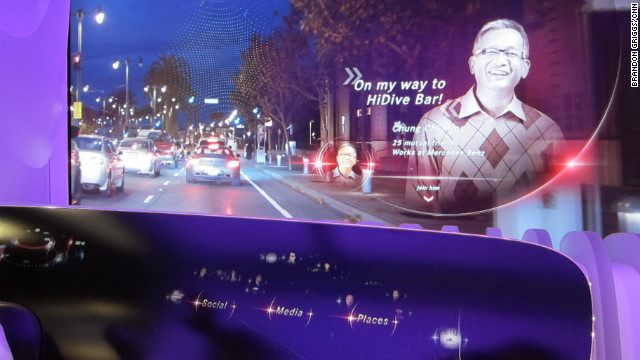Changing human behavior is difficult. Go ahead, try it! Exercise more! Eat tomatoes for breakfast!
Changing behavior with new technology is right up there amongst the world's greatest challenges, after world hunger and a few other issues. In my post on AR-4-Kids, I concluded that if children were introduced to AR during infancy, adopting it would never be in question. Certainly using it in daily life would seem natural. Do companies providing AR today really need to wait for the crop of children born in 2010 or later (introduced to tablets with Ernie and Bert speaking to one another) to play with these technologies and keep them as part of their behaviors?
Suppose you learned as an infant to adopt new technology? "Millennials" are among those who, from their earliest memories have mobile, Internet-connected technology in their hands and pockets and, in some cases, intuitively figure out the role it plays in their lives.
 Results of a study covered in several mobile marketing portals (but is surprisingly difficult to find on the Ypulse site), are not encouraging. The high school and college-age participants of Ypulse's survey are “baffled” by augmented reality technology, particularly when it's infused in mobile apps on leading smartphones. Neither of the news bulletins I've read about this study (here and here) describe the Ypulse methodology or sample size. However, below are the findings at a glance from the Mobile Marketing Watch portal:
Results of a study covered in several mobile marketing portals (but is surprisingly difficult to find on the Ypulse site), are not encouraging. The high school and college-age participants of Ypulse's survey are “baffled” by augmented reality technology, particularly when it's infused in mobile apps on leading smartphones. Neither of the news bulletins I've read about this study (here and here) describe the Ypulse methodology or sample size. However, below are the findings at a glance from the Mobile Marketing Watch portal:
- Only 11% of high schoolers and collegians have ever used an augmented reality app.
- retailers like Macy’s and brands like Starbucks have come out with mobile AR apps. They’re fun and clever, but as with QR codes, Millennials don’t always get the point.
Among students who have used AR apps:
- 34% think they’re easy and useful;
- 26% think they’re easy but not useful;
- 18% think they’re useful but not easy; and
- 9% think AR apps are neither useful nor easy to use.
We have a long way to go before the technology put in the hands of consumers, even the magnificent millennials today, meets true needs, adds value and gives satisfaction. Heck, we're not even near a passing grade!
Those who design and produce AR experiences must reduce their current reliance on advertising agencies and gimmicks. Or at least they must reduce emphasis on "wow" factor that clearly has no purpose (except to engage the potential customer with a brand or logo).
Utility, especially utility in the here and now, is more important than anything else to change behavior and increase the adoption of AR.
How useful is your AR experience?










